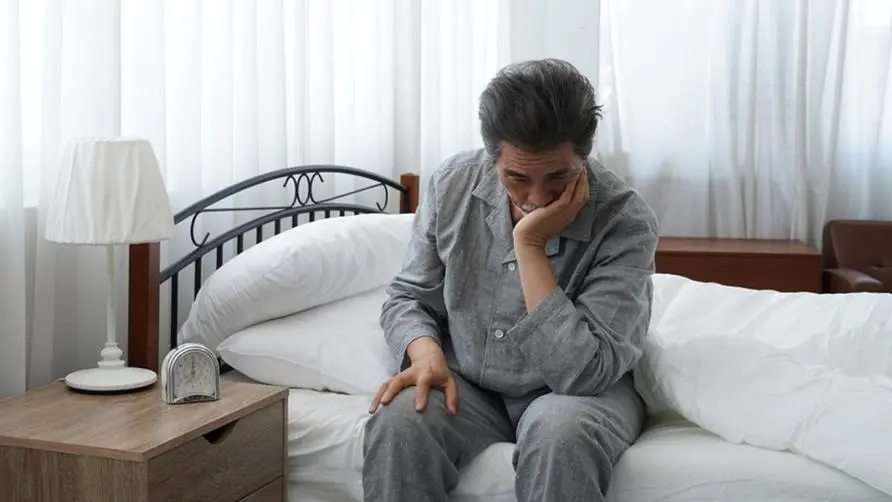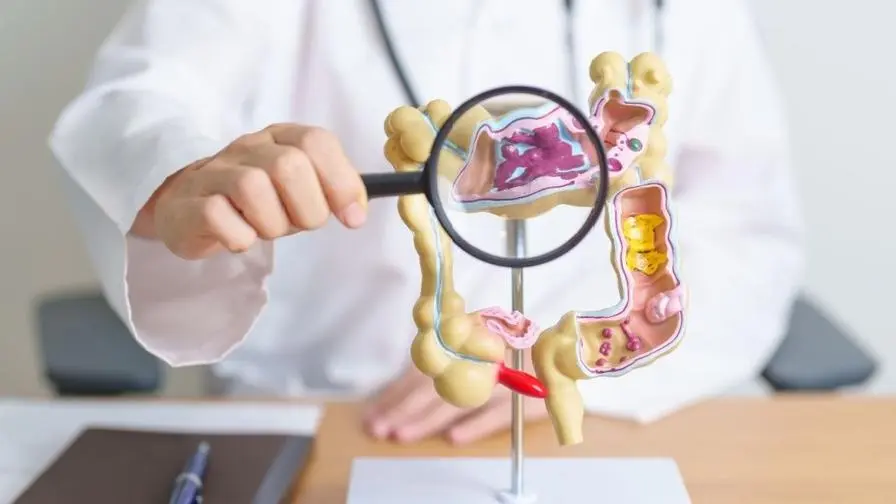Lung adenocarcinoma "EGFR mutation" has a high risk of brain metastasis! Doctors reveal two key points of new anti-vascular drugs: they are expected to break through the "blood-brain barrier" problem

The number of sick and dead people is the highest in Taiwan! Lung cancer jumps into top ten cancers, “Triple Crown”
According to the latest 2021 cancer registration report, the number of lung cancer cases is as high as 16,880, surpassing colorectal cancer for the first time to become the first. In addition to the number of cases, the annual increase in cases and death rates also ranks first among all cancers, jumping to the top of Taiwan’s cancer rankings. The “Triple Crown”. The mortality rate of lung cancer remains high, which is related to the stage of diagnosis. Among them, lung adenocarcinoma with “EGFR mutation” has a higher proportion of brain metastases. New treatment options are urgently needed for patients.
Chen Yumin, chairman of the Taiwan Society of Thoracic and Intensive Care Medicine, analyzed that although the government and the medical community have continued to promote low-dose computed tomography in recent years, a high proportion of people are still diagnosed in the late stage. According to the 2021 Cancer Registry, only 10% of people whose first treatment is surgery About 40%, it can be seen that most patients are in an inoperable condition when they are diagnosed and are in urgent need of new systemic treatment options. Lung cancer can be divided into two major categories: “small cell lung cancer” and “non-small cell lung cancer” based on cell type. Non-small cell lung cancer accounts for about 92% in Taiwan. “Lung adenocarcinoma”, the most common type of lung cancer among Taiwanese, falls into the non-small cell lung cancer category. Cell lung cancer. Among the known gene mutations, the epidermal growth factor receptor EGFR accounts for 50-60%.
“Lung adenocarcinoma is one of the cancers that is prone to brain metastasis, and patients with EGFR mutations have a higher proportion of brain metastases. According to the literature, about 20-30% of patients have brain metastases at the time of initial diagnosis; In addition, 50-60% of patients will have cancer cells spread to the brain during disease treatment, resulting in a poor prognosis. The medical community is also looking forward to more therapeutic weapons!” Chairman Chen Yumin explained.
Lung adenocarcinoma brain metastasis “anti-angiogenic drugs” break through the blood-brain barrier and increase drug concentration
To treat cancer cells that have metastasized to the brain, the first difficulty to be faced is the “blood-brain barrier”. Dr. Wang Jinzhou, deputy director of the Department of Internal Medicine and convener of the lung cancer team at Kaohsiung Chang Gung Memorial Hospital, said that the blood-brain barrier is a self-protection mechanism of the brain that can prevent microorganisms or chemicals from causing damage to the brain. However, when brain metastasis occurs, this mechanism However, it will prevent the drug from entering the brain smoothly, causing the drug concentration in the brain to be lower than the normal blood concentration, and it will not be able to effectively destroy cancer cells. At this time, anti-angiogenic drugs play a very important role.
The mechanism of anti-angiogenesis drugs is very special. It does not attack the tumor cells themselves, but inhibits abnormal angiogenesis and allows normal blood vessels to continue to normalize, so that the drugs can reach the tumor cells. Dr. Wang Jinzhou analyzed that there are two main reasons why anti-angiogenic drugs can improve the condition of brain metastasis: First, anti-angiogenic drugs can normalize blood vessels. When the blood vessel structure returns to normal, it can improve the symptoms of cerebral edema caused by metastasis and reduce the risk of brain metastasis. The accumulated water and brain pressure in the blood vessel can also bring the drug to the tumor site through the pressure difference between the inside and outside of the blood vessel.
Furthermore, when tumor angiogenesis is controlled, the microenvironment around the tumor will also be affected, making it easier for combined drugs, such as chemotherapy and targeted drugs, to work. Because of the special mechanism of the above-mentioned anti-angiogenesis drugs, they can be used in combination with other different drugs in anti-cancer strategies.
Dr. Liao Weiyu, Department of Thoracic Surgery, Department of Internal Medicine, National Taiwan University Hospital, further explained that the good use of anti-angiogenesis drugs can inhibit the growth of tumor blood vessels and normalize the blood vessels leading to the tumor. At the same time, combined with targeted drugs of different mechanisms, a two-pronged approach will be more effective. There are opportunities to control the disease, such as combining EGFR oral target drugs, which is a “dual-target” combination that can delay the progression of the disease according to trial data.
Anti-angiogenesis + anti-EGFR “dual-target” strategy trial confirms the hope of delaying disease progression
Regarding the medication instructions for this dual-target combination, Dr. Liao Weiyu said that according to data from a large phase III clinical trial conducted in Japan and targeting Asians, EGFR/anti-angiogenesis dual-target therapy has the opportunity to help patients with advanced or recurrent disease. Patients with non-squamous non-small cell lung cancer can delay the progression of the disease and the delay time may reach 1 year and 4 months. Among them, for EGFR mutations occurring in exon 21 (exon 21) group, the delay time may reach 1 year. 5 months. Therefore, this health insurance payment will also give priority to the exon 21 mutation group through benefits.
Dr. Liao Weiyu also reminded that before receiving anti-angiogenesis and oral EGFR dual-target therapy, you must still be evaluated by a physician to see if there are any contraindications, such as poorly controlled hypertension, proteinuria, bleeding problems, etc.; in addition, Side effects such as rash, diarrhea, and pulmonary bleeding may also occur during treatment. If any discomfort occurs, you should report it to your doctor immediately so that the doctor can evaluate and adjust the medication in a timely manner.
Reduce the financial burden of millions of patients! Doctors reveal 4 major payment conditions for dual targets
According to the trial results, the EGFR/anti-angiogenesis dual target can be helpful to first-line EGFR gene-mutated non-squamous non-small cell lung cancer patients. However, in the past, patients had to pay for it out of their own pocket. The entire course of treatment may cost more than one million yuan, and patients face challenges financial burden. Now finally comes the good news. Since March 1st, health insurance benefits have been officially launched. Patients with “unresectable” brain metastases, “non-squamous non-small cell lung cancer”, and patients with “EGFR Exon21 L858R activating mutation” will have the opportunity to receive it. First line application.
Finally, the Taiwan Society of Thoracic and Intensive Care Medicine encourages patients to take the initiative to discuss with their attending physicians. Now that treatment options are becoming more and more advanced and diverse, there is no need to be discouraged even if brain metastasis occurs after diagnosis. Through different drug combinations, there is a need to It is an opportunity to stabilize the disease and control lung cancer stably like a chronic disease. Advanced lung cancer can also face new opportunities.
Extended reading:





